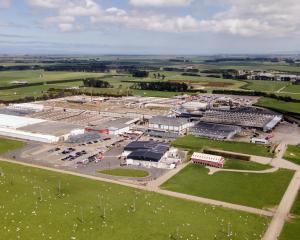New Zealand's economic recovery continues to build in strength but Finance Minister Bill English continues to downplay the importance of the first annual growth since June 2008.
Statistics New Zealand figures showed the economy, as measured by gross domestic product (GDP), grew 0.8% in the three months ended December.
Not only was that the third consecutive quarter of expansion but annual growth of 0.4% was the first in 18 months.
The figures showed an increase in manufacturing output and an inventory rebuild supported by the first signs of increased investment activity and a modest improvement in household spending on both consumer goods and house building.
However, Mr English said more work was needed to ensure a sustainable recovery that created jobs and lifted the incomes of New Zealand families.
"These figures are another step in the road to recovery, but we are still regaining ground lost during the global crisis and New Zealand's own recession which started in early 2008."
The challenges facing the economy included a still fragile global recovery and serious imbalances in the economy built up from years of "rampant" government growth under Labour and too much borrowing for housing and consumer spending, he said.
The Budget in May would set out the next steps to lift economic growth by "tilting the playing field" towards productive investment, exports and new jobs, Mr English said.
BNZ economist Stephen Toplis said the 4.5% increase in manufacturing GDP accounted for more than 60% of the 0.8% total expansion for the quarter.
Strength in the sector was largely driven by increased global demand for commodities.
The rebound in both manufacturing and inventories was coming off a very low base. In the case of manufacturing, current activity was still 16.5% down from its 2005 peak.
"Typically, bounces in these aggregates contribute significantly to economic activity immediately post recession."
Like Mr English, Mr Toplis warned that the ride to recovery would remain bumpy and vulnerable to a series of potential shocks both globally and domestically.
The result was modestly stronger than the Reserve Bank's forecast but should be inconsequential in terms of the central bank's decision-making process.
"That aside, risky and unsteady the recovery might be but at least economic activity is slowly but surely stumbling in the right direction. While we are hardly in a state of nirvana, there is no doubt the outlook is far more rosy now than it has been for some time," Mr Toplis said.
Council of Trade Unions economist and policy director Bill Rosenberg welcomed the strong rise in manufacturing but said it followed seven quarters of contraction.
Manufacturing had not had two consecutive quarters of growth since September 2005.
"It will be a considerable time before manufacturing returns even to that peak, adding to employment concerns.
"Our concerns that high unemployment will continue for at least the next two to three years remain. If the economy is growing, and corporate profits are increasing as indicated by yesterday's balance of payments report, the Government should have sufficient revenue to support the unemployed and to continue to support activity in the economy. We do not want to see jobless growth," he said.












